Track individual users in Google Analytics and get a singular view of your customer journeys.
When it comes to monitoring and measuring web traffic, most people will turn to Google Analytics. That doesn’t come as a surprise.
Google Analytics is great for providing a general overview of traffic coming in and going out of your website, but in order to truly harness the power of Analytics, you need to focus on collecting and collating individual data instead.
While many marketers believe it’s out of the question to track individual users in Google Analytics, it’s not impossible.
If your application or website has a login authentication system, then it is possible to track users in Google Analytics with its User ID tracking feature.
In this guide, we’ll show you how to get started with User ID tracking in Google Analytics and help you make better sense of your marketing data.
Topics we’ll discuss:
TL;DR
👉 A User ID in Google Analytics is a feature that allows tracking of user activity across devices and sessions by assigning a unique ID to each user.
👉 There is a dedicated report in GA4 called “User Exploration”. You can click through and see the different interactions each anonymous visitor has completed on your website.
👉 There are two major flaws with user tracking in Google Analytics. It requires users to log in to work, and Analytics can’t track personally identifiable information.
👉 Without personally identifiable information, the link between your marketing, website and revenue is effectively broken.
👉 With first-party visitor-level attribution, you can follow individual users, track customer journeys, and better understand the performance of your digital marketing efforts. Learn more on how to track website visitors.
Most of the data you see in Google Analytics is aggregated, so you’re not able to find a specific user, where they came from, or what they did on your website.
With Google Analytics User ID tracking, you have access to that data.
Google Analytics sets a cookie whenever a user enters your website and assigns them a unique anonymous ID.
Related: All you need to know about first-party cookies and third-party cookies
There is a dedicated report in GA4 called “User Exploration”. You can find that by navigating to “Explore” in your Google Analytics account. In Exploration, choose the template “User Explorer”.
Here you can click through and see the different interactions each anonymous visitor completed on your website such as a view, event, purchase or goal completion.
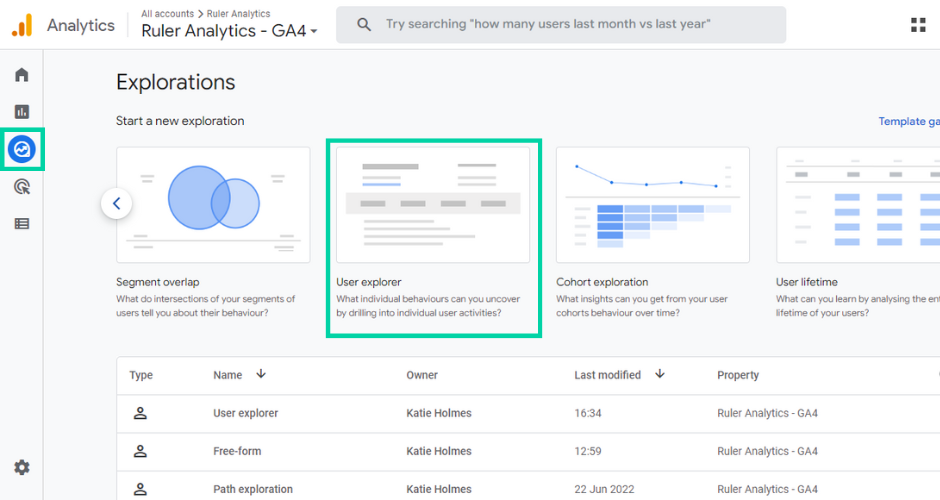
💡 Pro Tip
If you’re still using the data in Universal Analytics you can find user IDs by going to Audience > User Explorer. Here you’ll see a list of anonymous IDs that Analytics assigns to your website visitors.
By default, Google Analytics doesn’t allow you to send over personal identifiable information about users on your website.
What you can do, however, is generate your own unique IDs through your own user authentication system and send them to your Google Analytics account.
A user authentication system is usually a website login, through which a user can log in and log out.
Let’s say for example, Ella types in an organic search and comes across your website.
Ella signs up using her email address, navigates through your website and interacts with some of your products.
A few days later, Ella enters a direct search using her smartphone and completes a purchase on your website.
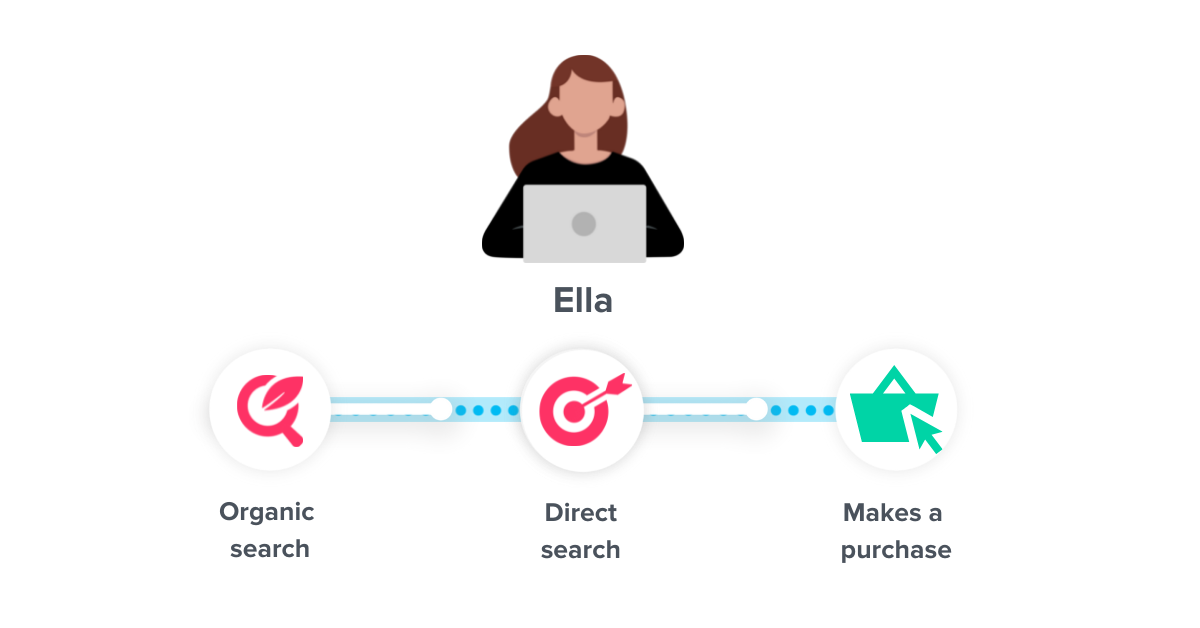
Without a unique User ID, your Google Analytics would record this journey as two separate users. When, in fact, it was the same person.
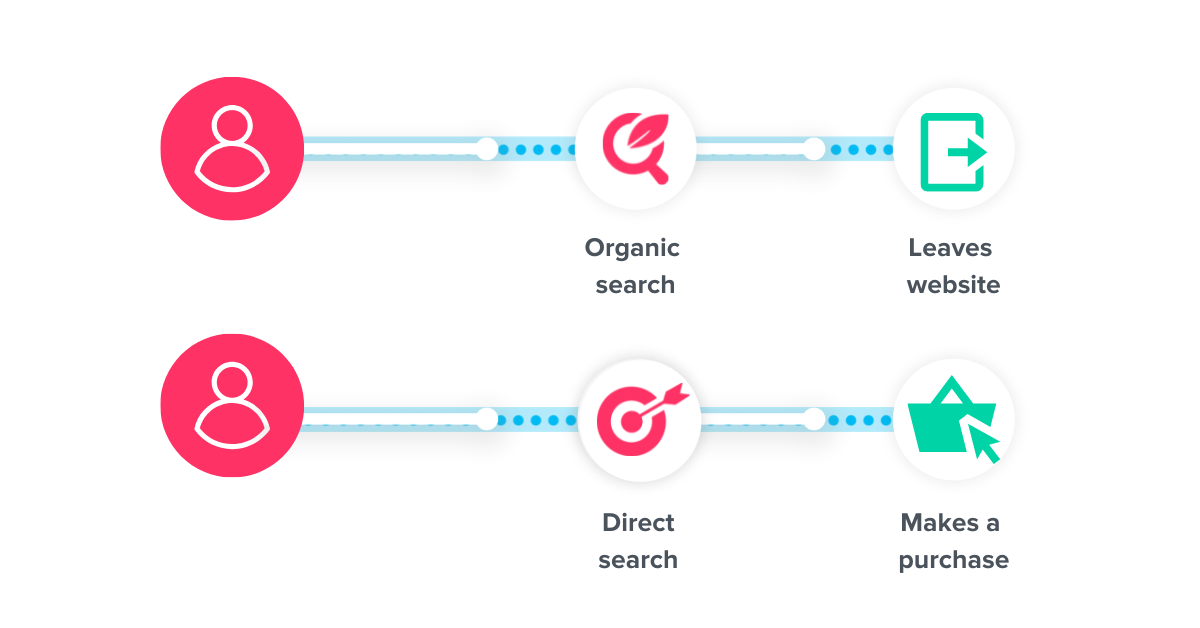
Using ID tracking allows you to connect these sessions and create a single view of your users in Google Analytics. You can gain access to qualitative user data to distinguish how people interact with your website, products or services.
To implement the User ID feature, you must be able to generate your own unique IDs from your authentication system and include them in your Google Analytics tracking code. Such a task typically involves the help of a developer. You can learn more about this here.
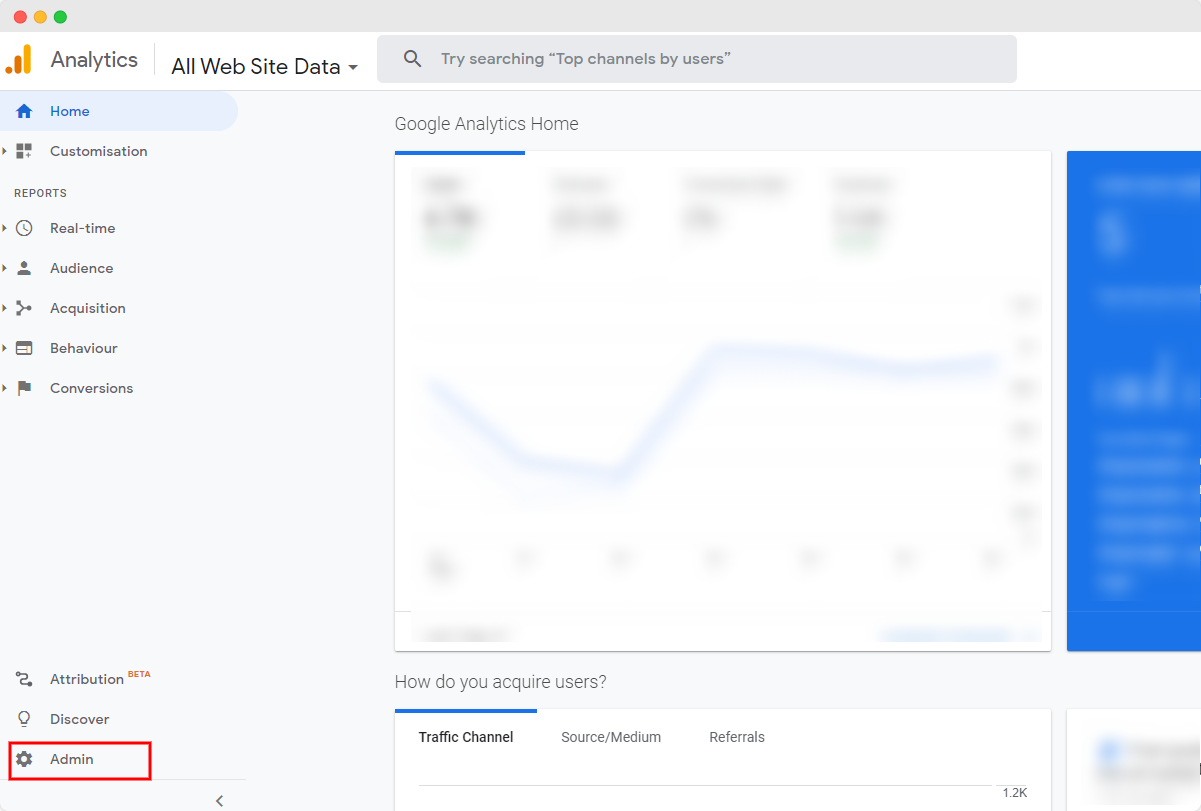
1. First, go to your Google Analytics account and go to ‘Admin’.
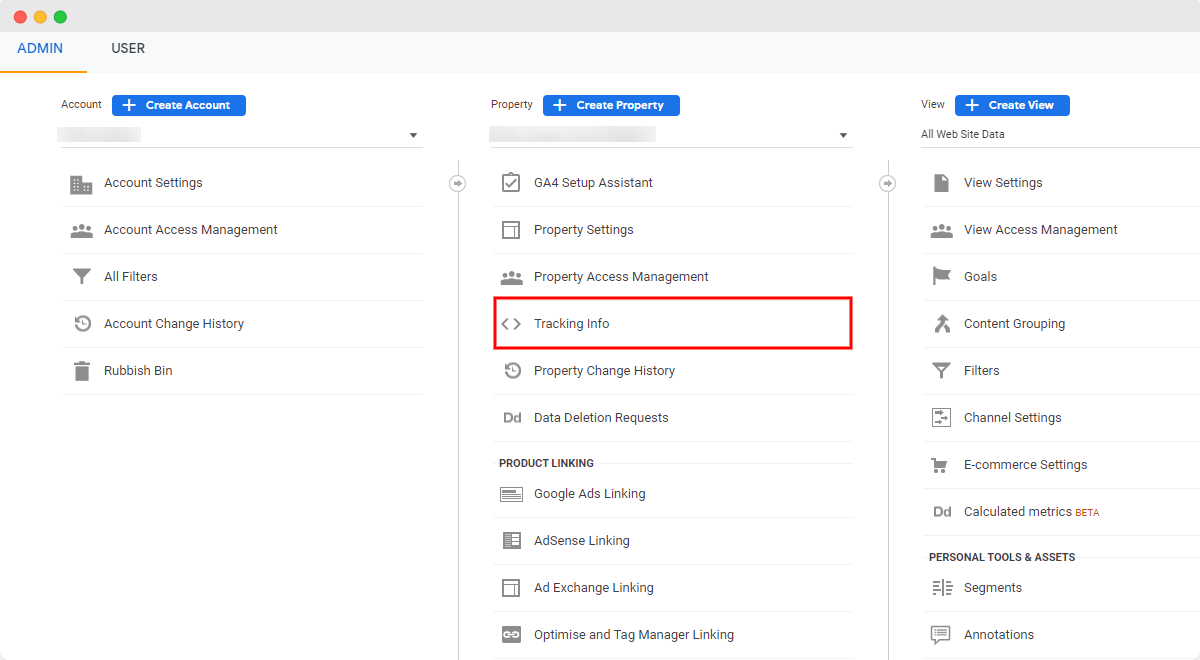
2. Select ‘Tracking Info’ and click on ‘User-ID’.
3. Review and agree to the User-ID policy and click ‘Next step’.
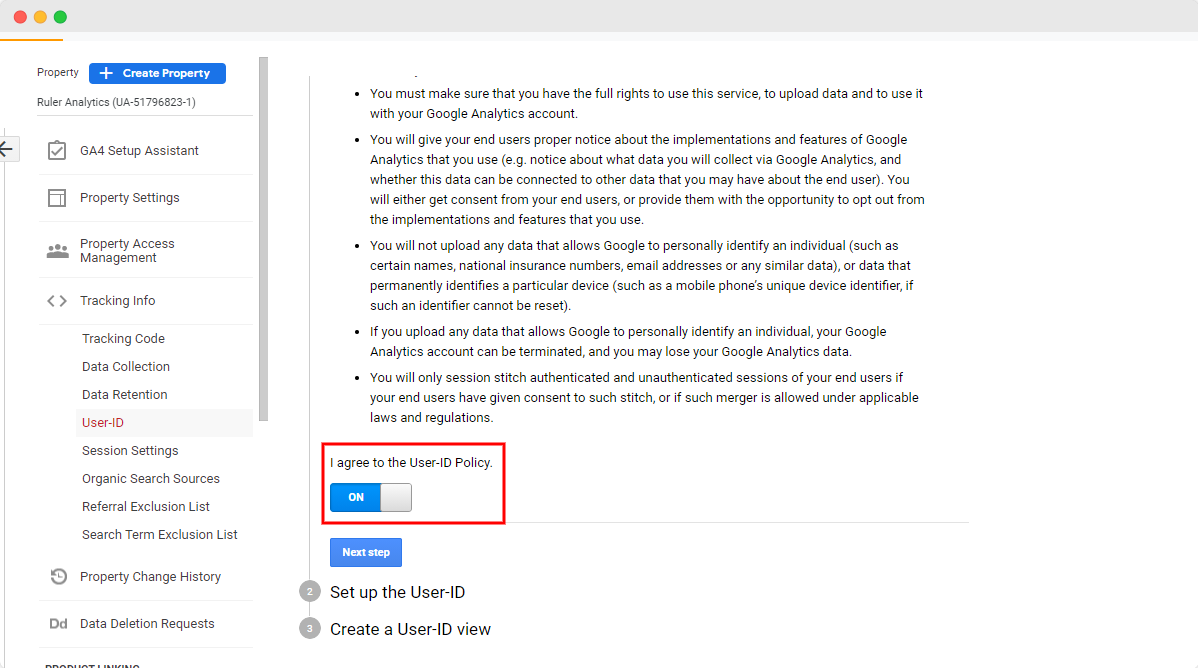
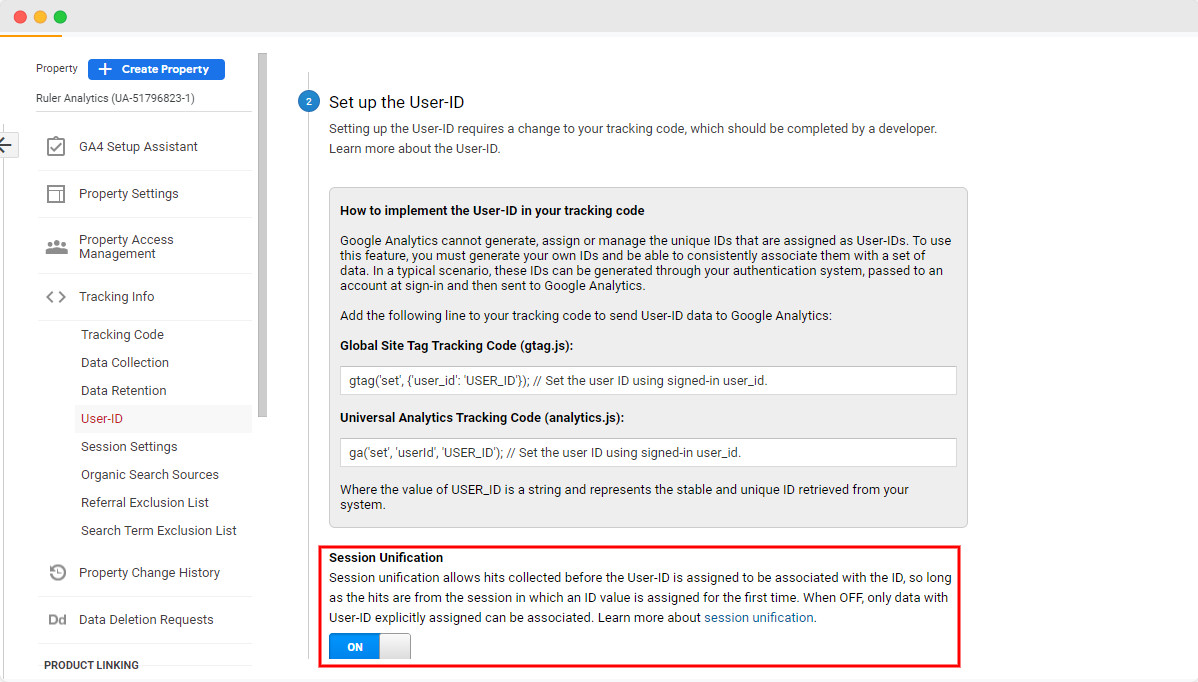
4. Setting up the User-ID will require changes to your tracking code, so you may need to call in your developer for some help. Analytics provides you with a line of code to add to your own tracking code and customise it to collect the User IDs you’re sending over. You can upload the tracking code using the Google Tag Manager or you can opt for the universal analytics tracking code. For now, make sure that the Session Unification is switched ‘ON’.
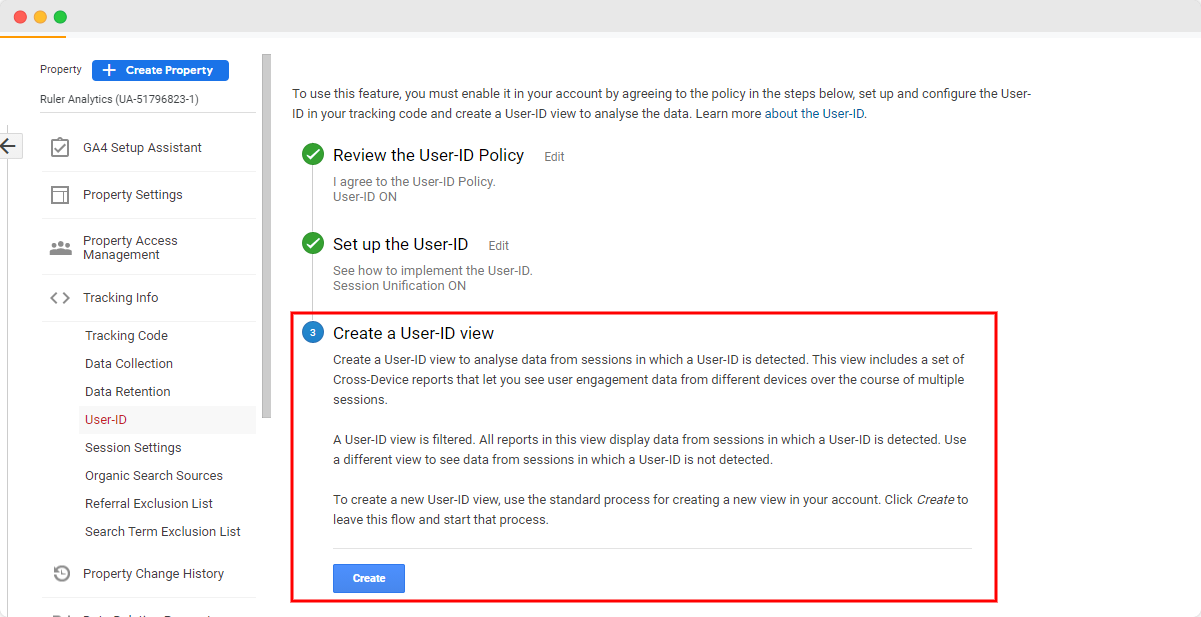
5. User ID tracking won’t be available in your default view, so you’ll need to create a separate view to analyse your user IDs. All you need to do is select ‘Create’ and follow the steps to generate a new reporting view to access your data collected by the tracking ID.
Once you’ve successfully set up your user ID in Google Analytics and added the tracking code to your website, you can start gaining deeper insights about your user’s across different channels and devices.
💡 Pro Tip
Now you know how to track visitor journeys in Google Analytics, how about taking it to the next level? Learn how to send marketing source data to your CRM and enrich your Google Analytics reports with closed revenue.
Learn how to unlock marketing revenue in Google Analytics
Universal Analytics isn’t going to be around forever.
Google Analytics announced that it is phasing out Universal Analytics on July 1, 2023.
So, if you’re still relying on Universal Analytics, we recommend that you start your move to Google Analytics 4 sooner than later.
Anyway, back to the topic at hand. Below is a step by step guide to user ID tracking in GA4.
💡 Important Note
We’ll assume that you have created a Google Analytics 4 configuration tag on your website. If you’re new to GA4. then check out our guide on setting up Google Analytics 4.
1. In your configuration tag, click on “Field to Set” > “Add Row” and enter in “User_id”.
2. You will need to enter a variable that contains the actual ID of the visitor who has logged into your website. There are several options to capture the visitor’s User Id. We already know that Google Analytics doesn’t allow you to capture personally identifiable information such as emails and IP addresses. You can, however, use a random sequence of numbers to track users.
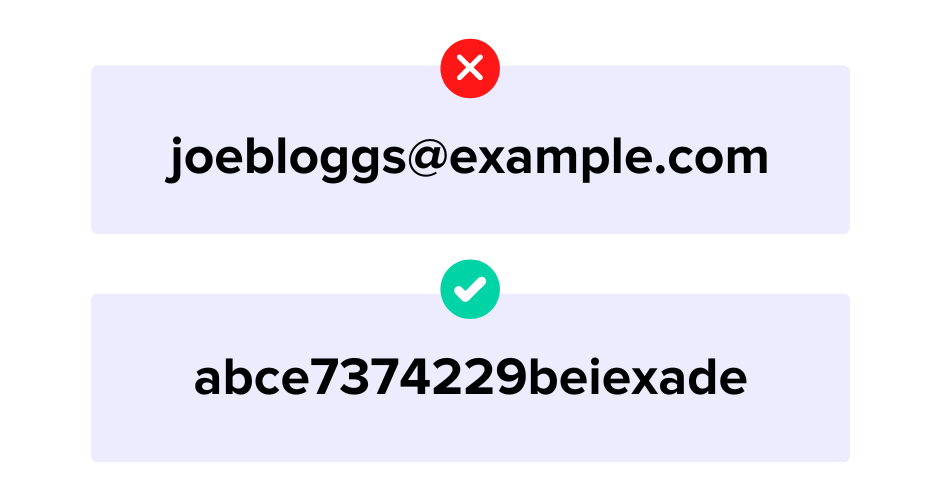
2.1 Ask a developer to push the User ID to the data layer
If your website has an authentication system that allows the users to log in with their credentials, then you can push the User ID to the Data Layer.
This isn’t easy to do, so you will need to ask a developer for help. You can give them access to your code, and they can modify it to capture the User ID.
2.2 Capture the User ID from the already existing cookie
Some websites store the User Id in a cookie. In this case, you can use Google Tag Manager to capture the value and send it to Google Analytics.
If you’re using Google Chrome, you can check whether your website stores the User ID in a cookie by going to “More Tools” > “Developer Tools” > “Application” > “Cookies”.
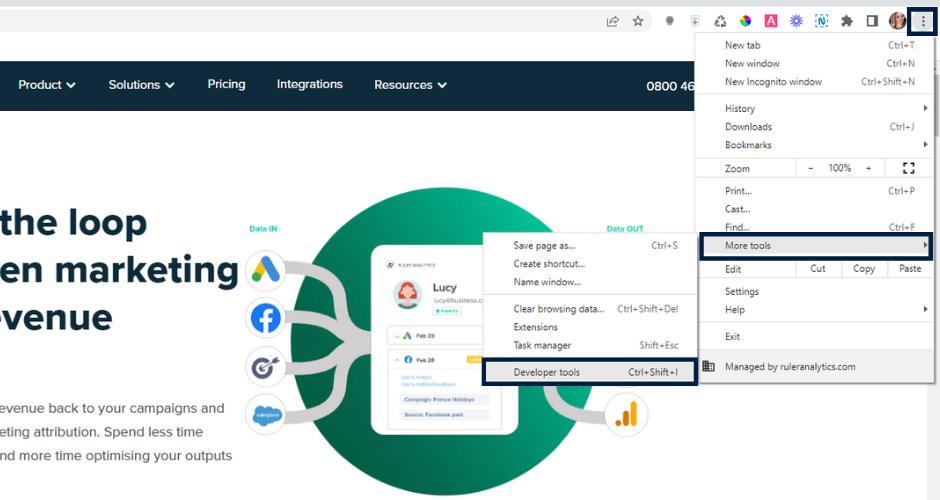
Choose your domain and look for a name that might be related to a User ID. You can use the filter to help whittle down your results.
If your website stores the User ID in the cookie, take a note of the name, go to “Google Tag Manager UI > Variables > New. Select the variable’s type, 1st Party Cookie and enter the name into the “Cookie Name”.
2.3 Access the User ID via the Global JavaScript Variable
It’s not uncommon for the User Id to be stored in the Global JavaScript Variable.
Again, this is tricky. So we recommend that you ask a developer for some help.
You can, however, look for it yourself. Go to the developer console of your browser. Type “Window” and click “Enter“.
Next to “Window“, click on the black triangle. You should see a list of properties that you can use to access with a JavaScript Variable in Google Tag Manager.

If you manage to find an ID anywhere, head over to the Google Tag Manager interface > Variables > New > JavaScript Variable and enter the entire path that you followed to find the customer ID.
3. Now you’re ready to insert the User ID variable into your GA4 configuration tag that you set up in step. Once uploaded, click “Save”.
4. It’s time to test your configuration tag. Before you go live with your configuration tag, you need to test that it works in Preview mode. If you’re not sure how to do it, this guide on testing tags in GTM can help you.
5. If everything looks good in GTM, go to the Google Analytics 4 DebugView to check it’s capturing the User Id. In GA4, go to Configure > DebugView. Best way to determine whether or not it’s working is by looking for your own device. Once you do that, you should see one of the items in the event stream listed as “user_id”.
6. Once you’re satisfied with the data in GA4. Go back to GTM and save your changes. Click the submit button in the top-right corner and you’re good to go. Be aware that it can take up 24-hours before you notice the changes in GA4.
💡 Pro Tip
Follow Katie on LinkedIn for tips and tactics on attribution, analytics and all things digital marketing. Don’t forget to say hi. 👋
Google Analytics User ID tracking has made it possible for marketers to track logged-in users and measure the effectiveness of their marketing across multiple channels and devices, but it isn’t perfect. Let’s take a look at why.
In reality, not all users who visit your website are going to log in and reveal information about themselves.
User IDs are generated through your authentication system, passed to an account when a user signs-in, and then sent to Analytics.
To put it another way, Google Analytics can’t generate or assign a unique user ID unless they sign up or log into your website or application.
Sending personal identifiable information to Google Analytics is strictly prohibited, but sending a unique user ID is allowed.
Analytics can only display an alphanumeric ID for each user.
You can’t send personal information to Google Analytics such as email addresses, names, phone numbers and other attributes that could point to a user.
As you can imagine, this causes significant problems for marketers trying to connect the dots between lead generation activity and customer data.
💡 Pro Tip
With the closed-loop framework, you can easily connect revenue with marketing source data to measure your ROI and demonstrate the effectiveness of your campaigns. Download the free handbook to close the loop between your marketing leads and revenue.
Your complete guide to closed-loop marketing attribution
To successfully employ the User-ID feature, you must be able to generate your own unique IDs in your authentication system, assign IDs to new users and consistently reassign the same IDs to returning users, and send these IDs to your Analytics property.
User ID tracking is intensive and involves a lot of moving parts. It typically requires the help of a developer, which doesn’t come cheap.
Taking the limitations and the time it takes to set up User ID tracking into consideration, it’s clear that Google Analytics isn’t the most reliable method to track your individual users.
If you really want to understand how users are behaving on your site, then visitor analytics tools are the best and only way to go.
By monitoring and measuring the movements of specific visitors, you will be able to better serve your entire audience.
With first-party visitor level analytics tools like Ruler, you can follow individual users, track customer journeys, and better understand the performance of your digital marketing efforts.
Related: How to view your full customer journeys with Ruler
Ruler tracks every anonymous visitor over multiple sessions, traffic sources, keywords and more.
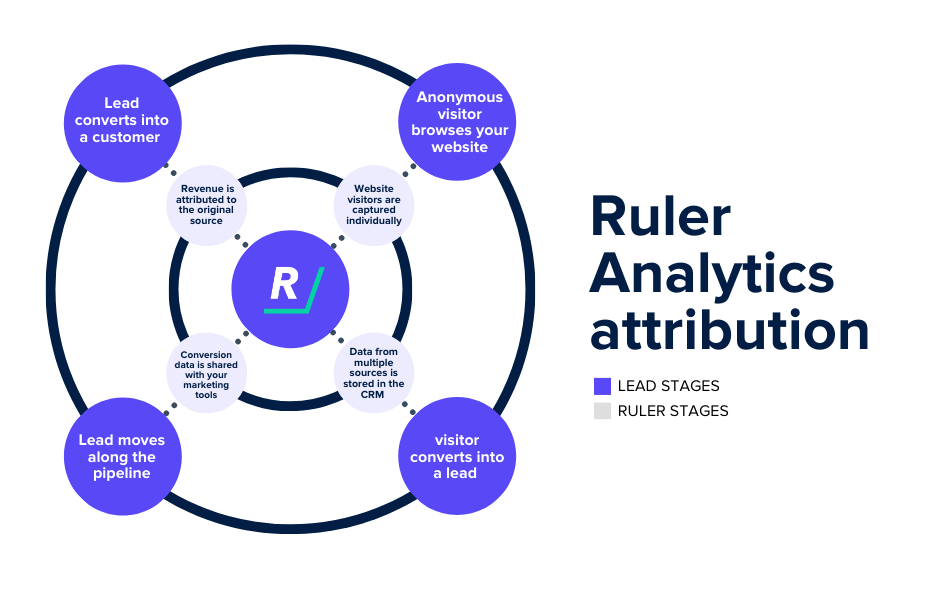
When an anonymous user will convert into a lead via a phone call, live chat enquiry or form submission. Ruler will match the user’s conversion details to their marketing touchpoints, allowing you to see individual customer journeys directly in Ruler.
Take the example below.
We can see that this user clicked on one of our marketing attribution ads and converted into a lead using a form. Having complete access to conversion and marketing touchpoint data allows us to gain full visibility into where our most valuable leads are coming from.

Once Ruler’s finished matching up your data, the marketing source and conversion data is sent to your CRM (or wherever you store your lead data), allowing you to monitor leads as they move through the sales funnel.

Marketing data typically includes channel source, campaign, keyword, landing page, first and last click activity. Ruler, however, can capture up to 60 marketing variables.
When a lead agrees to a sale or deal, whether it be in a week, month, year or more, the revenue amount is sent back to Ruler.
Related: How Ruler attributes revenue to your marketing
Here you can measure the impact of your marketing channels through the lens of different attribution models. More importantly, you can report on the effectiveness of your marketing based on pipeline generation and not just conversions.
You can also integrate revenue data with Google Ads, Analytics, Microsoft Advertising and 1,000+ tools to compare performance and measure marketing ROI straight out of the reporting tools you use every day.
💡 Pro Tip
Tracking customer interactions across multiple channels unlocks powerful insights that you can use to improve your customer experience and marketing efforts. See how Ruler can help you follow the complete lifecycle from awareness to loyalty.
How Ruler tracks full customer journeys
First-party attribution tracking gives detailed insights into your clicks and digital touchpoints.
But what if a person sees an ad, doesn’t click, but a few days later converts into a lead?
Neither Google Analytics nor traditional attribution can capture this interaction and link it to revenue.
But there’s a workaround, and that’s marketing mix modelling.
Related: What is marketing mix modelling, and how does it work?
With marketing mix modelling, you can see what impact your invisible touchpoints (e.g. ad views, TV impressions and radio ads) have had on your commercial outcomes.
Let’s revert back to Ruler and quickly explain how marketing modelling works.
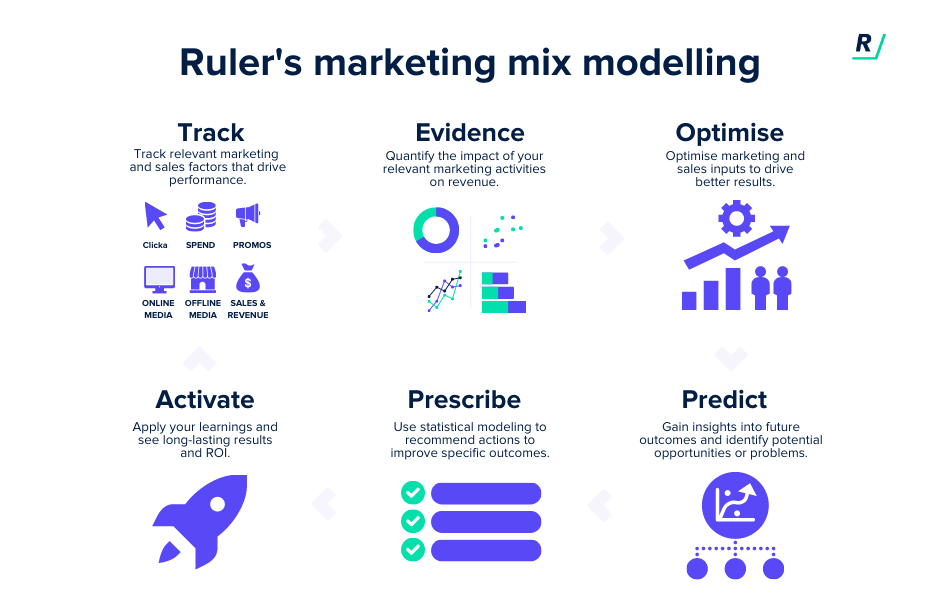
Ruler’s marketing mix modelling tracks aggregated channel-level data.
It uses statistical modelling to establish a relationship between your marketing efforts and business outcomes.
Ruler’s model takes into account various factors that may affect business outcomes, such as ad spend, economic conditions, and competitive activity.
Once it’s collected enough data, Ruler will show you the marketing sources (online and offline) that are contributing the highest value leads, opps and deals for your business.
Then, it’ll use machine learning to predict the point at which additional investments will no longer result in a significant conversion or ROI.
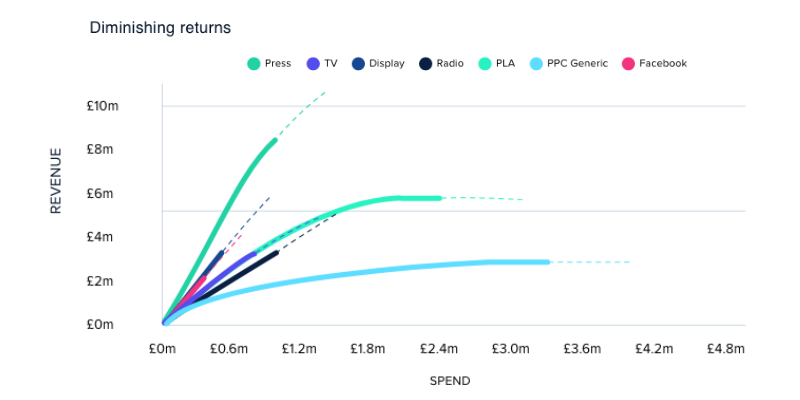
Here’s the best bit. Ruler’s MMM doesn’t rely on cookies or personally identifiable information, so it’s future-proof and privacy-forward.
And when Ruler’s MMM is paired with attribution, you answer questions like:
User ID tracking in Google Analytics allows you to keep track and compare the behaviour of logged-in users.
But for all its benefits, User ID tracking in Analytics alone isn’t enough when you’re trying to determine what content and marketing channels are most influential at driving leads and revenue.
That’s why visitor level tracking is the most reliable way to go. Using a tool like Ruler, you can track and record every website visitor, and even better, see which of those visitors are turning into revenue.
Don’t forget you can read our in-depth guide on how Ruler attributes revenue back to your marketing for more information.
Or, if you’re ready to book a demo, then our team would love to talk. Schedule a time that suits you and learn more about the benefits of Ruler Analytics.
